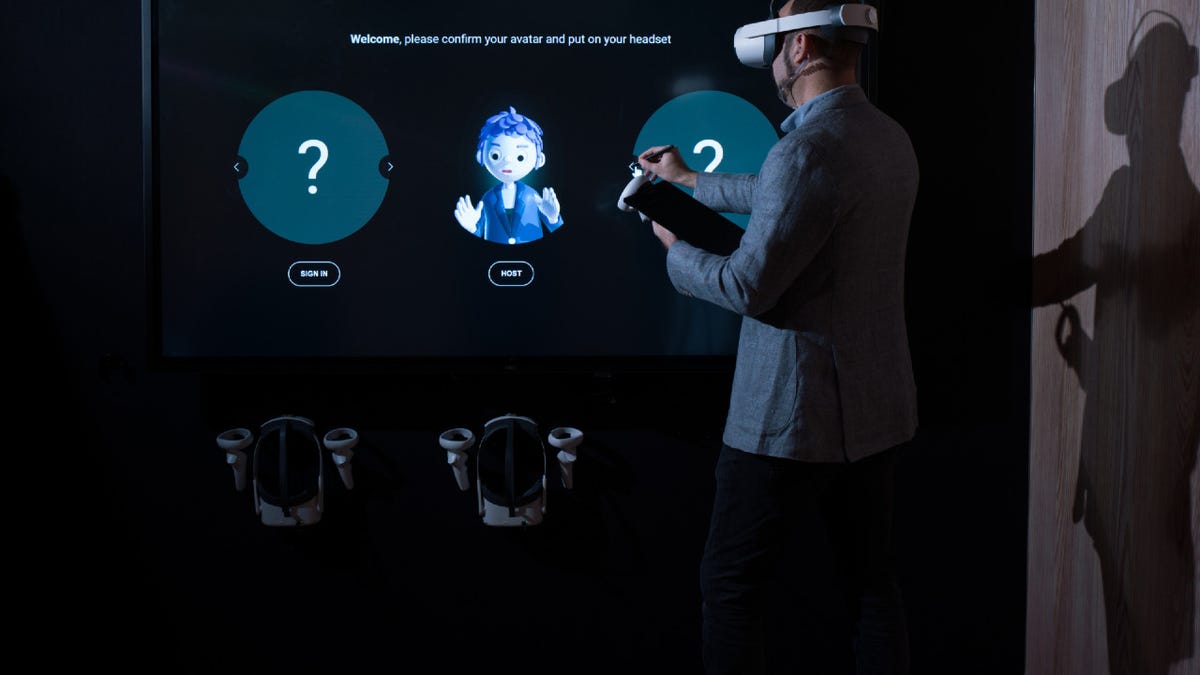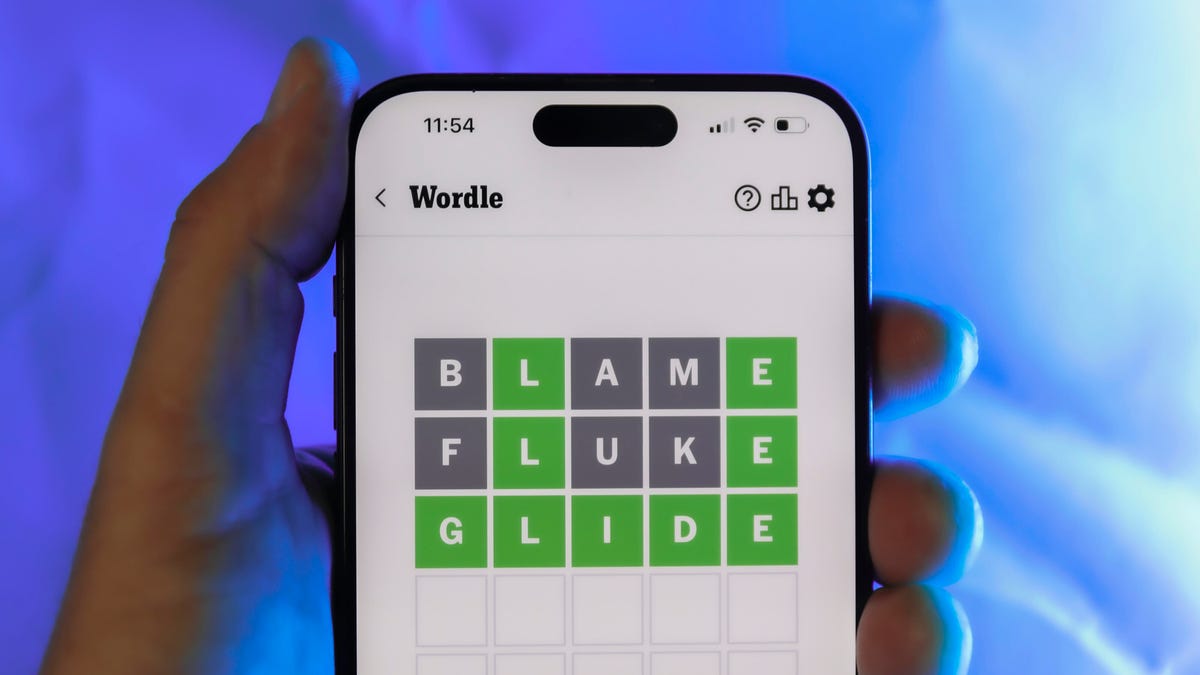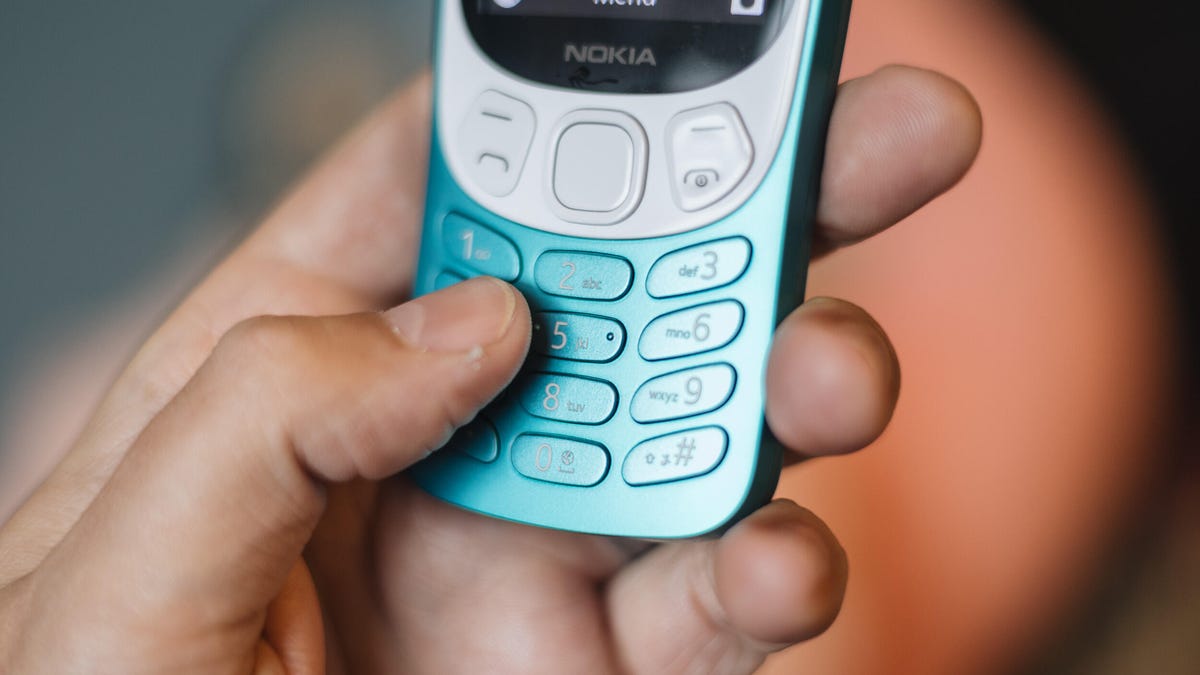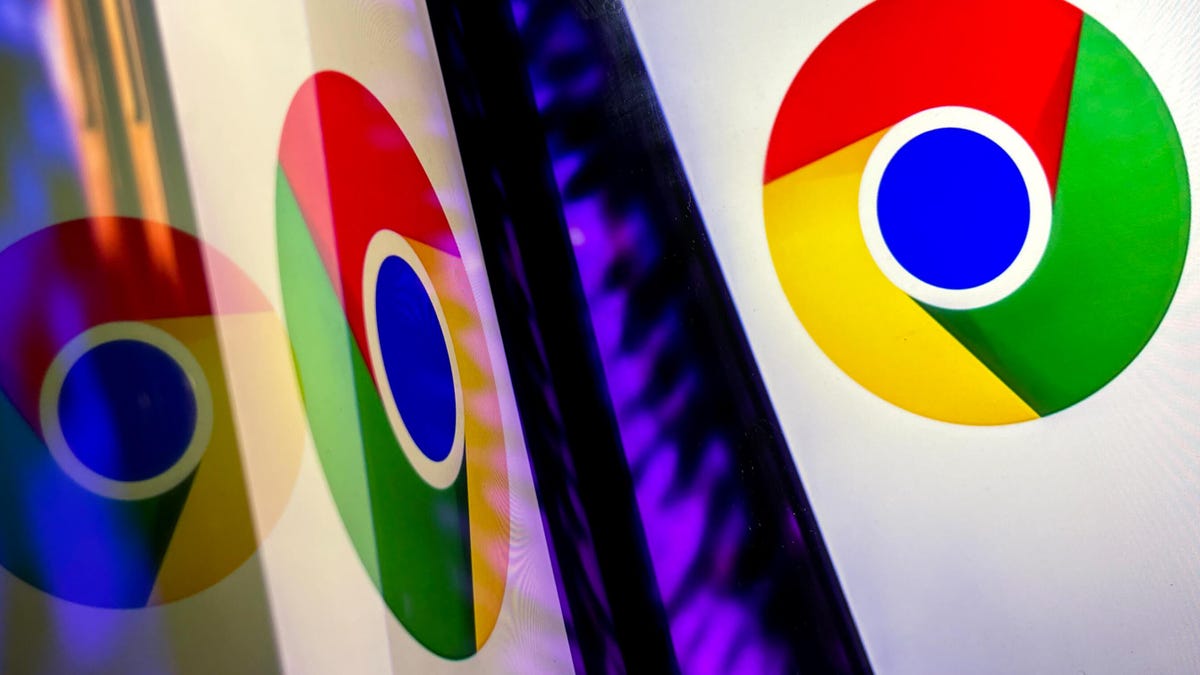Technologies
What CES 2023 Showed Me About the Future of Work
New laptops and accessories at CES could help a metaverse-based hybrid work environment make more sense.

Walking the halls of CES 2023, a lot feels the same as ever. Packed spaces, big TVs, lots of new laptops. But in the three years since I was last here in person, a lot has changed, and I’d argue some of the biggest and most consequential changes are to how we work.
It may take a little digging under the surface, but this year’s CES show has a lot to say about the great shift toward hybrid and remote work, in everything from better video conference tools to attempts at building a metaverse-infused, mixed-reality workspace.
Meetings in the metaverse
The metaverse office concept, at least according to one definition, is a shared collaborative space where one can participate via several means: virtual or augmented reality, 3D displays, standard laptop, tablet and phone screens; or in-person through things like smart whiteboards that work across all these different experiences.
Dell has become a leader in showing off concept pieces and prototypes during CES, and this year, its Concept Nyx (the same name Dell uses for gaming prototypes) tackles that version of the metaverse head on. At a pre-CES preview, I was able to participate in a faux meeting by creating a 3D avatar for others to see, and also by sitting in front of an autostereoscopic display (allowing you to see in 3D without special glasses) that gave me a 3D view of a project. After that, I donned a VR headset to feel like I (or my avatar) was actually in that shared space and writing on a whiteboard with my VR controller. And after that, I was able to use a slate-style tablet to interact with the real-world version of that same whiteboard, but without wearing a headset.
None of this is close to being a shipping product anytime soon, and like many things at and around CES, the hardware is carefully labeled as «conceptual.» Of that batch of products and experiences, the oversize, glasses-free 3D display, using eye-tracking hardware to make the 3D image actually look decent, seemed like the part with the most workplace potential.
Gamers go first
Much new PC technology is driven first by the gaming audience, which has a tolerance for gear that can be both expensive and experimental. That’s why ideas like VR and autostereoscopic 3D often show up in gaming hardware first, before moving into more practical products for your nongaming hours.
For example, this CES saw several new 18-inch gaming laptops, a screen size that’s been virtually extinct since the early 2010s. The first of these bigger screens are in gaming laptops from Dell, Razer, Asus and Acer, but there’s obvious crossover appeal for hybrid and remote workers who want the flexibility of a laptop but with a larger screen that feels more desktop-like. Razer laptops, with their minimalist styling, are especially popular with gamers and creative pros alike. I would not be surprised to see more professionally pitched laptops eventually grow into that new 18-inch size.
Asus also leaned into glasses-free 3D with its new ProArt Studiobook and Vivobook Pro laptops. Both, similar to Dell’s display prototype, use eye tracking to make 3D viable. And those devices are aimed at artists and designers, not gamers. Acer also has a similar eye-tracking 3D laptop aimed at gamers, called the Predator Helios 300, as well as a professional display from 2022 called the Acer SpatialLabs View with that same technology.
Laptops with glasses-free 3D were first tried back in 2012 and never made it to a second generation. The eye tracking in these new versions, however, makes the experience miles better.
More, and different, screens
Other experiments, like Lenovo’s twin-OLED-screen Yoga Book 9i and color E Ink/OLED combo, the ThinkBook Plus Twist, might eventually offer some new features that will bleed into more staid work laptops, but it’s far from a sure thing. That said, new E Ink devices like the 10.3-inch Yoga Paper could have more practical work applications, and I only say that because I’ve been using a similar-feeling new Amazon Kindle Scribe while walking the floor at CES 2023 to great effect.
The most welcome trend in both consumer and commercial laptops from the past two years continues unabated, I’m pleased to say. Nearly every new laptop we saw defaulted to a full-HD 1,080-resolution webcam, rather than the wimpy low-res versions that were common prepandemic.
Even better, it’s considered such a standard feature that PC makers hardly feel the need to call it out anymore. It was way too long in coming, and low-res webcams made that first year of remote work in 2020 more difficult than it needed to be for many. But now that we’ve normalized the hybrid workplace and accept video meetings as equal to in-person ones, I’d call it one of those subtle but important changes to how we work that’s making life just a little bit easier.
Technologies
Today’s Wordle Hints, Answer and Help for Nov. 4, #1599
Here are hints and the answer for today’s Wordle for Nov. 4, No. 1,599.

Looking for the most recent Wordle answer? Click here for today’s Wordle hints, as well as our daily answers and hints for The New York Times Mini Crossword, Connections, Connections: Sports Edition and Strands puzzles.
Today’s Wordle puzzle begins with one of the least-used letters in the alphabet. (Check our full list ranking the letters by popularity.) If you need a new starter word, check out our list of which letters show up the most in English words. If you need hints and the answer, read on.
Today’s Wordle hints
Before we show you today’s Wordle answer, we’ll give you some hints. If you don’t want a spoiler, look away now.
Wordle hint No. 1: Repeats
Today’s Wordle answer has one repeated letter.
Wordle hint No. 2: Vowels
Today’s Wordle answer has two vowels, but one is the repeated letter, so you’ll see that one twice.
Wordle hint No. 3: First letter
Today’s Wordle answer begins with V.
Wordle hint No. 4: Last letter
Today’s Wordle answer ends with E.
Wordle hint No. 5: Meaning
Today’s Wordle answer can refer to the place where something happens, especially an organized event such as a concert, conference, or sports event.
TODAY’S WORDLE ANSWER
Today’s Wordle answer is VENUE.
Yesterday’s Wordle answer
Yesterday’s Wordle answer, Nov. 3, No. 1598 was AWOKE.
Recent Wordle answers
Oct. 30, No. 1594: LATHE
Oct. 31, No. 1595: ABHOR
Nov. 1, No. 1596: MOTEL
Nov. 2, No. 1597: RABID
Technologies
Why You Should Consider a Burner Phone for Your Holiday Travel This Year
If you’re traveling internationally, carrying a simple phone that doesn’t store personal information can be a smart move when entering the US.

Travel is challenging enough, and this year adds a new hurdle. US border agents are stepping up searches of travelers entering the country — even US citizens returning from overseas — and that extends to their personal devices. These searches can go beyond a quick look, giving agents the authority to copy or analyze a phone’s contents.
According to new figures from US Customs and Border Protection, nearly 15,000 device searches were carried out between April and June, with over 1,000 of them using advanced tools that copy or analyze what’s on a phone. The rising numbers raise questions about how much personal data travelers may be handing over without realizing it.
So what’s the solution? A burner phone. It’s the ultimate defense for keeping your personal data private when you travel, ensuring you stay connected without handing over your entire digital life at the border.
But the appeal goes beyond privacy. A stripped-down phone is also the perfect escape from the constant notifications and screen-time vortex of your primary device. Even celebrities such as Conan O’Brien have embraced simpler phones to cut through the noise. Whether you’re crossing a border or just trying to cross the street without distractions, a burner might be the smartest tech you own.
Read more: Best Prepaid Phone of 2025
Although carriers have offered prepaid phones since the ’90s, «burner phones» or «burners» became popular in the 2000s following the celebrated HBO series The Wire, where they helped characters avoid getting caught by the police. Although often portrayed in that light, burners aren’t only used by criminals; they’re also used anyone concerned with surveillance or privacy infringement.
What is a burner phone, and how does it work? Here’s everything you need to know about burners and how to get one.
Don’t miss any of our unbiased tech content and lab-based reviews. Add CNET as a preferred Google source.
What is a burner phone?
A burner phone is a cheap prepaid phone with no commitments. It comes with a set number of prepaid call minutes, text messages or data, and it’s designed to be disposed of after use.
Burners are contract-free, and you can grab them off the counter. They’re called burner phones because you can «burn» them (trash them) after use, and the phone can’t be traced back to you, which makes them appealing to criminals. Burner phones are typically used when you need a phone quickly, without intentions of long-term use.
Burners are different from getting a regular, contract-bound cellphone plan that requires your information to be on file.
Why should you use a burner phone?
Burner phones are an easy way to avoid cellphone contracts or spam that you get on your primary phone number. Burners aren’t linked to your identity, so you can avoid being tracked down or contacted.
You don’t have to dispose of a burner phone after use. You can add more minutes and continue using it. Burner phones can still function as regular phones, minus the hassle of a contract.
You can also get a burner phone as a secondary phone for a specific purpose, like having a spare phone number for two-factor authentication texts, for business, or to avoid roaming charges while traveling. Burner phones are often used by anyone concerned with privacy.
Read more: The Data Privacy Tips Digital Security Experts Wish You Knew
Burner phones, prepaid phones, smartphones and burner SIMs: What’s the difference?
Burner phones are cheap phones with simple designs that lack the bells and whistles of a smartphone. Because they’re designed to be disposable, you only get the essentials, as seen by the most common version, the flip phone.
All burner phones are prepaid phones, but not all prepaid phones are burners. What sets a burner apart is that you won’t have to give away any personal information to get one, and it won’t be traceable back to you. Again, a burner phone is cheap enough to be destroyed after use.
Prepaid smartphones are generally low-end models. You can use any unlocked smartphone with prepaid SIM cards, essentially making it a prepaid phone.
If you want a burner, you don’t necessarily have to buy a new phone. You can get a burner SIM and use it with an existing phone. Burner SIMs are prepaid SIMs you can get without a contract or giving away personal information.
Where can you buy a burner phone?
Burner phones are available at all major retail outlets, including Best Buy, Target and Walmart. They’re also often available at convenience stores like 7-Eleven, local supermarkets, gas stations and retail phone outlets like Cricket and Metro.
You can get a burner phone with cash, and it should cost between $10 and $50, although it may cost more if you get more minutes and data. If you’re getting a burner phone specifically to avoid having the phone traced back to you, it makes sense to pay with cash instead of a credit card.
If you just want a prepaid secondary phone, you can use a credit card. Just keep in mind that credit cards leave a trail that leads back to you.
There are also many apps that let you get secondary phone numbers, including Google Fi and the Burner app. However, these aren’t burners necessarily because the providers typically have at least some of your personal information.
If you’re just looking to get a solid prepaid phone without anonymity, check out our full guide for the best prepaid phone plans available. We also have a guide for the best cheap phone plans.
Technologies
Chrome Autofill Now Supports Passport, Driver’s License and Vehicle Info
Soon, you’ll never need to remember anything ever again.

Computer users are accustomed to web browsers autofilling everything from names and addresses to credit card numbers. Now, Google Chrome is adding new enhanced autofill options that allow users to automatically populate fields for passports, driver’s licenses, and their vehicle’s license plate or VIN, Google said in a blog post on Monday.
Desktop users must choose to turn on the feature, which is called enhanced autofill. Otherwise, it stays off. To turn it on, open Chrome, and at the top right of your browser, select more, then settings, then autofill and passwords. Finally, choose enhanced autofill and turn it in.
Google says Chrome now can «better understand complex forms and varied formatting requirements, improving accuracy across the web.» The company also says that enhanced autofill will be «private and secure.»
This enhanced autofill update is available in all languages, and more data options will be supported in the coming months.
A representative for Google said the company had no additional comment.
Don’t miss any of our unbiased tech content and lab-based reviews. Add CNET as a preferred Google source.
Chrome is a critical component in Google’s business. The web browser, currently the most popular in the world with a 73% market share, according to GlobalStats, provides the company with valuable user data that it uses to sell advertising. Advertising is how Google makes the majority of its revenues. New features help keep users loyal to Chrome, making it more difficult for them to switch to other browsers, including those from companies like Perplexity and OpenAI.
-

 Technologies3 года ago
Technologies3 года agoTech Companies Need to Be Held Accountable for Security, Experts Say
-

 Technologies3 года ago
Technologies3 года agoBest Handheld Game Console in 2023
-

 Technologies3 года ago
Technologies3 года agoTighten Up Your VR Game With the Best Head Straps for Quest 2
-

 Technologies4 года ago
Technologies4 года agoVerum, Wickr and Threema: next generation secured messengers
-

 Technologies4 года ago
Technologies4 года agoBlack Friday 2021: The best deals on TVs, headphones, kitchenware, and more
-

 Technologies4 года ago
Technologies4 года agoGoogle to require vaccinations as Silicon Valley rethinks return-to-office policies
-

 Technologies4 года ago
Technologies4 года agoOlivia Harlan Dekker for Verum Messenger
-

 Technologies4 года ago
Technologies4 года agoiPhone 13 event: How to watch Apple’s big announcement tomorrow
